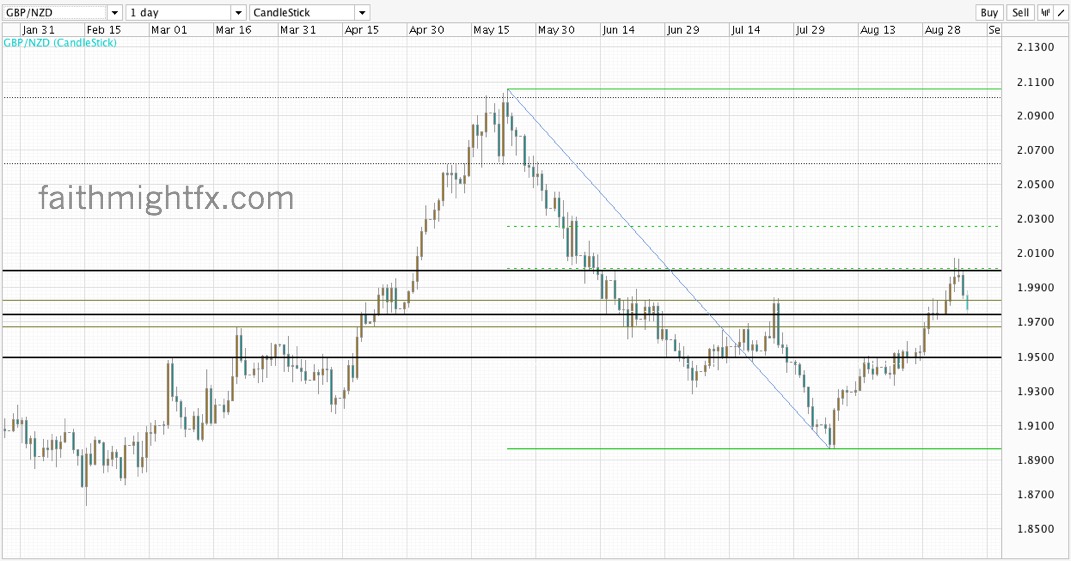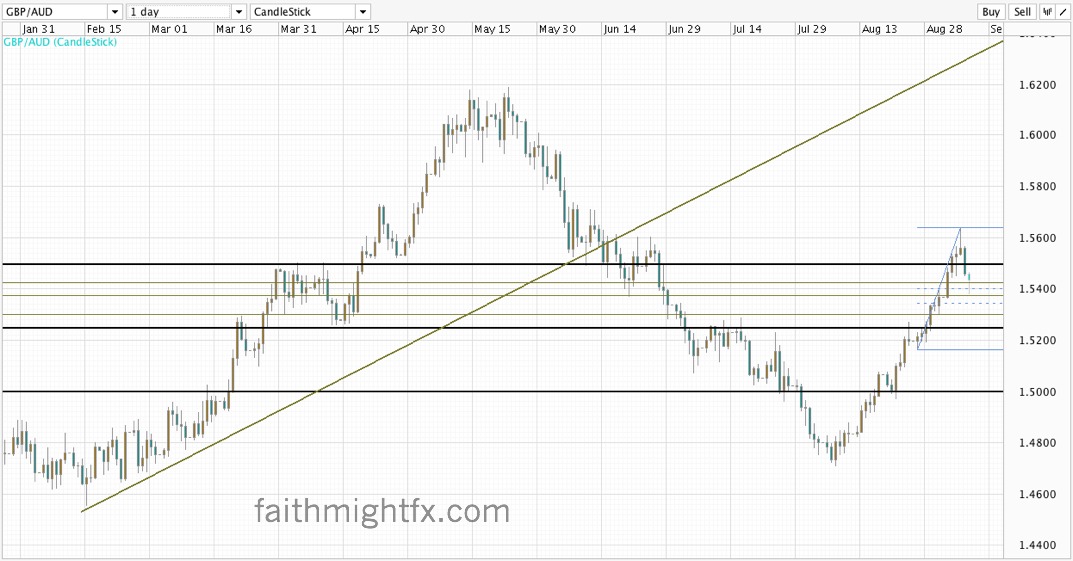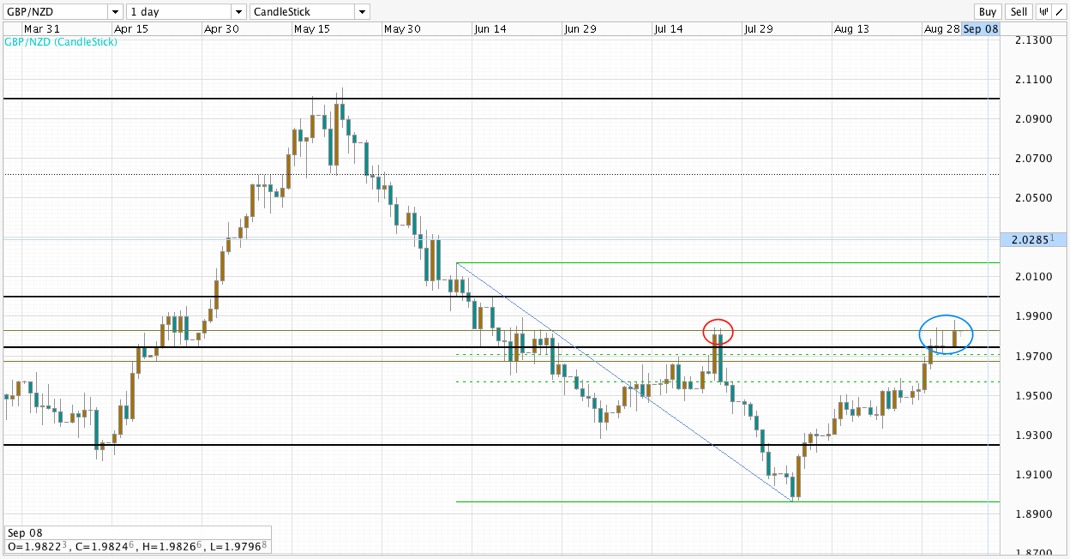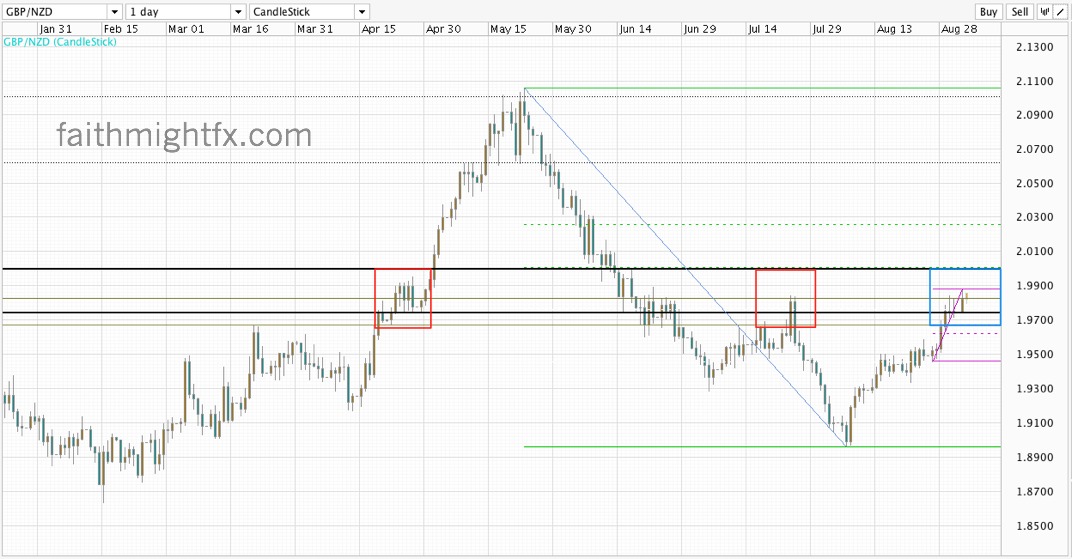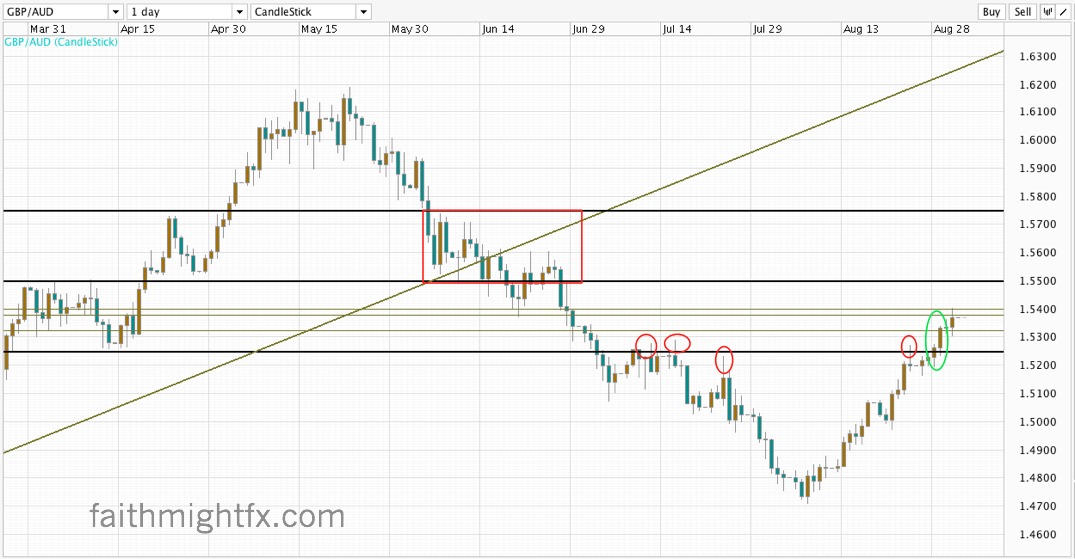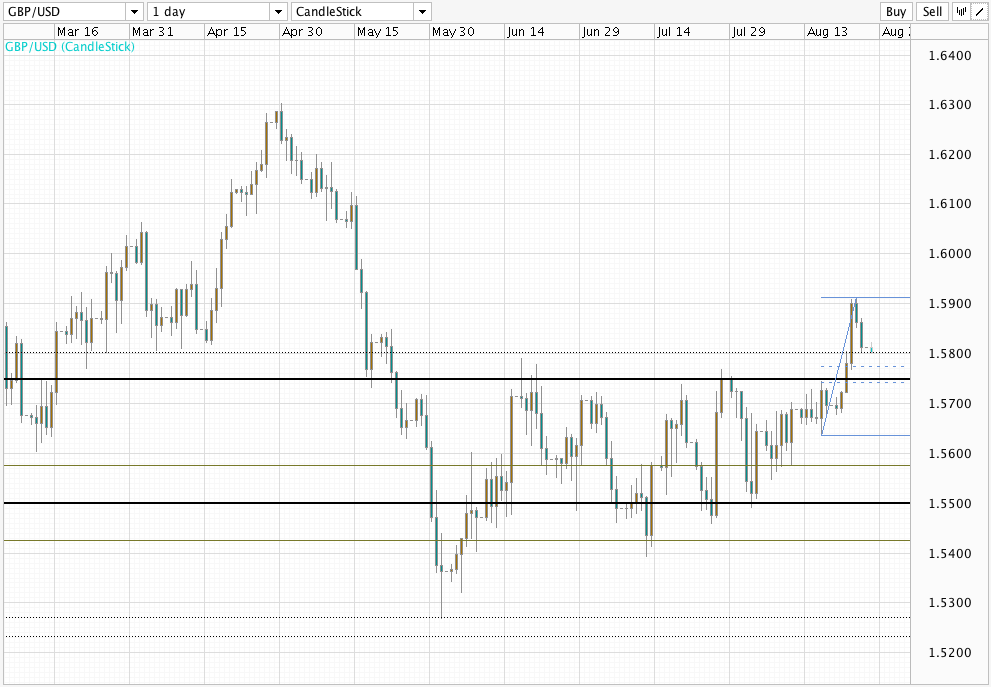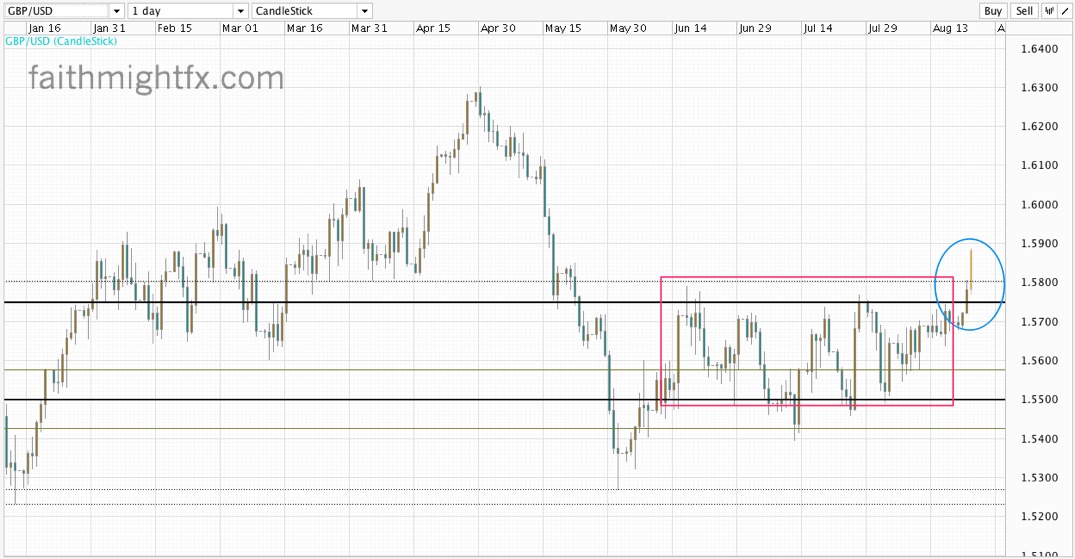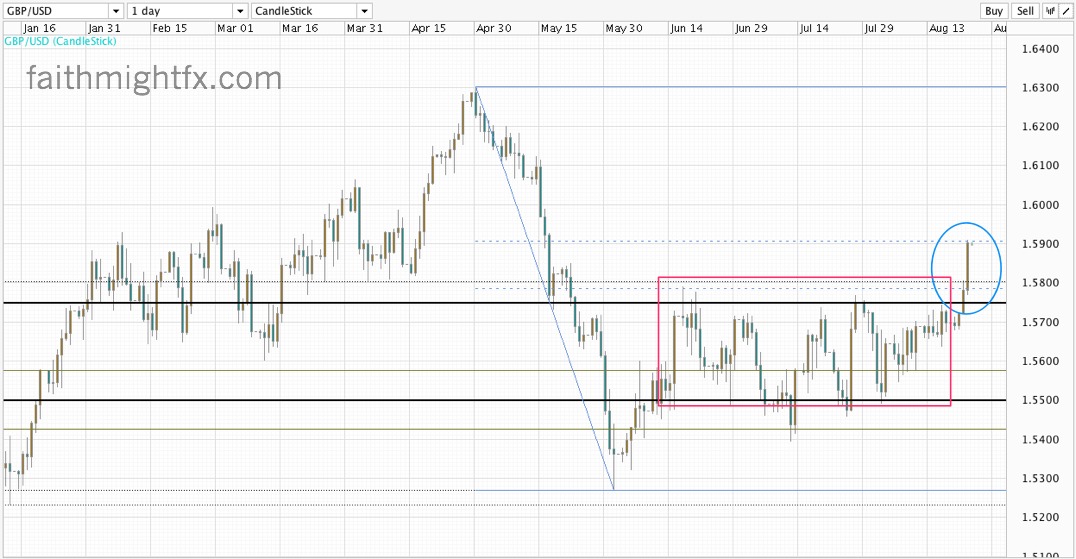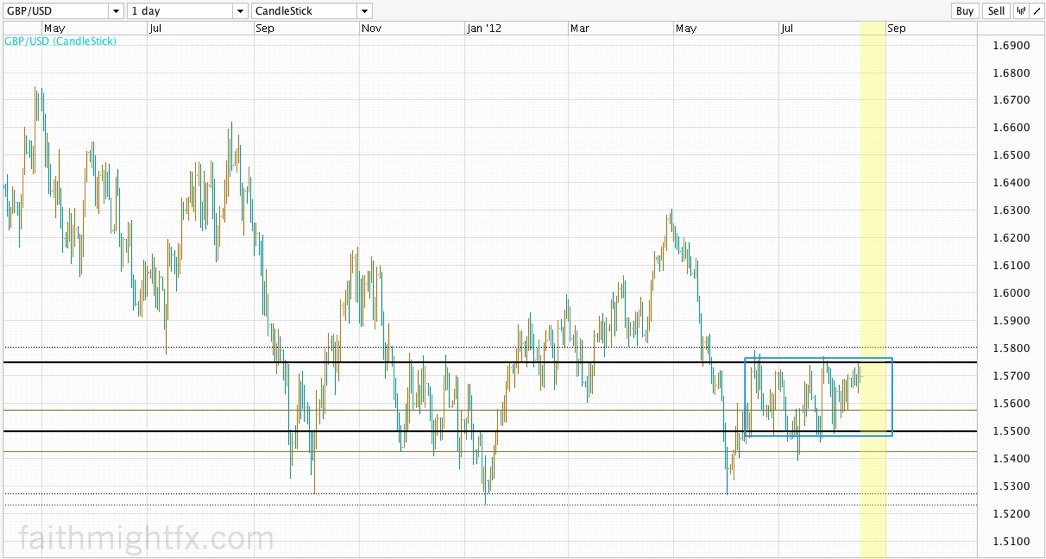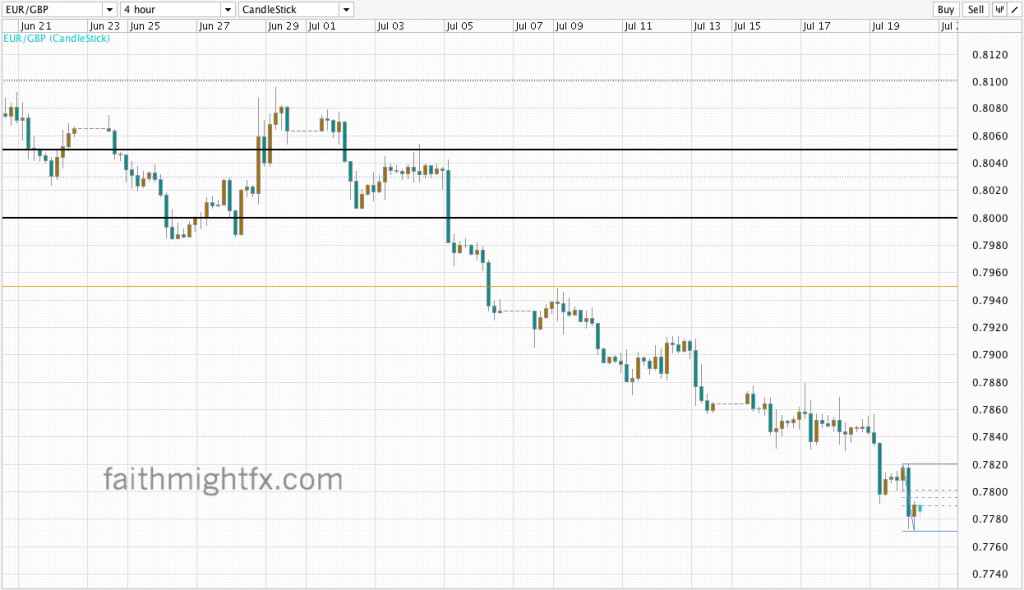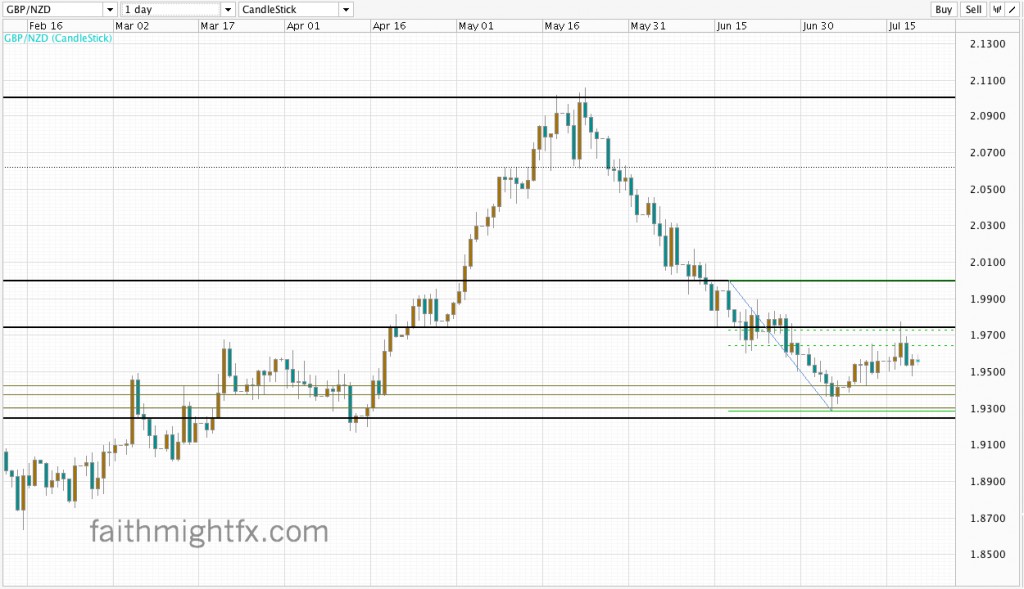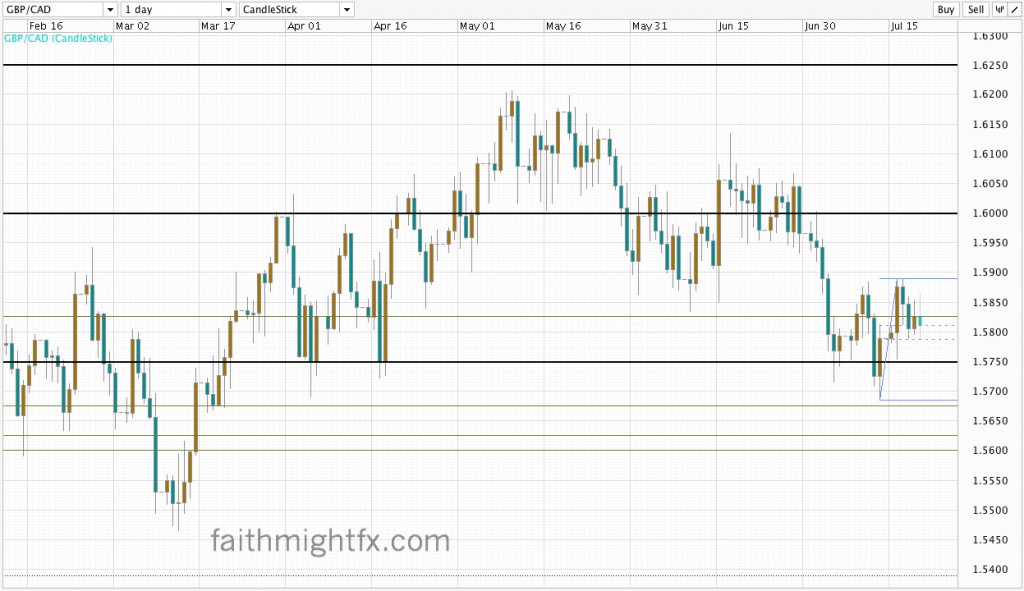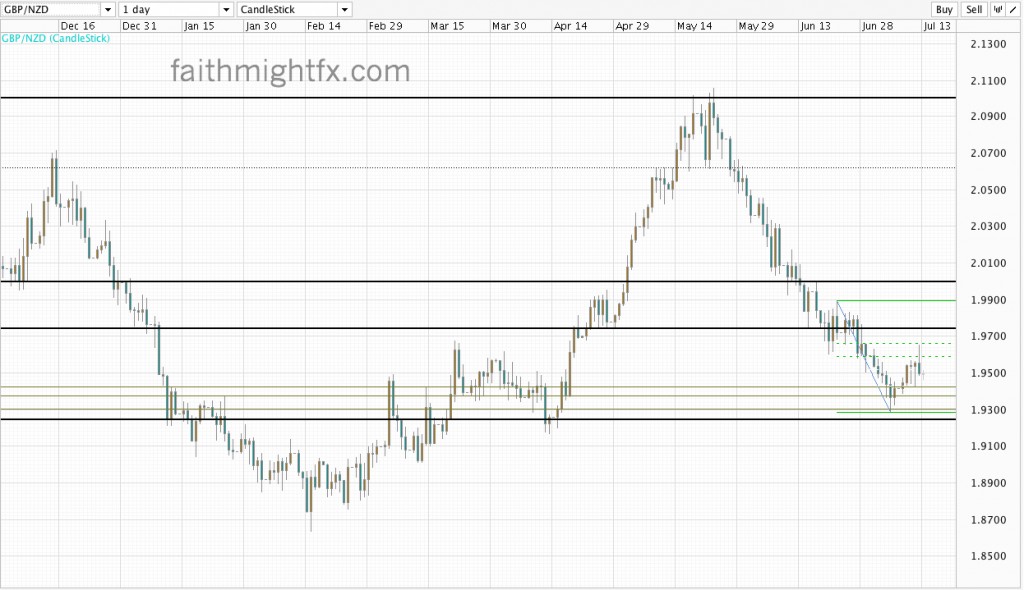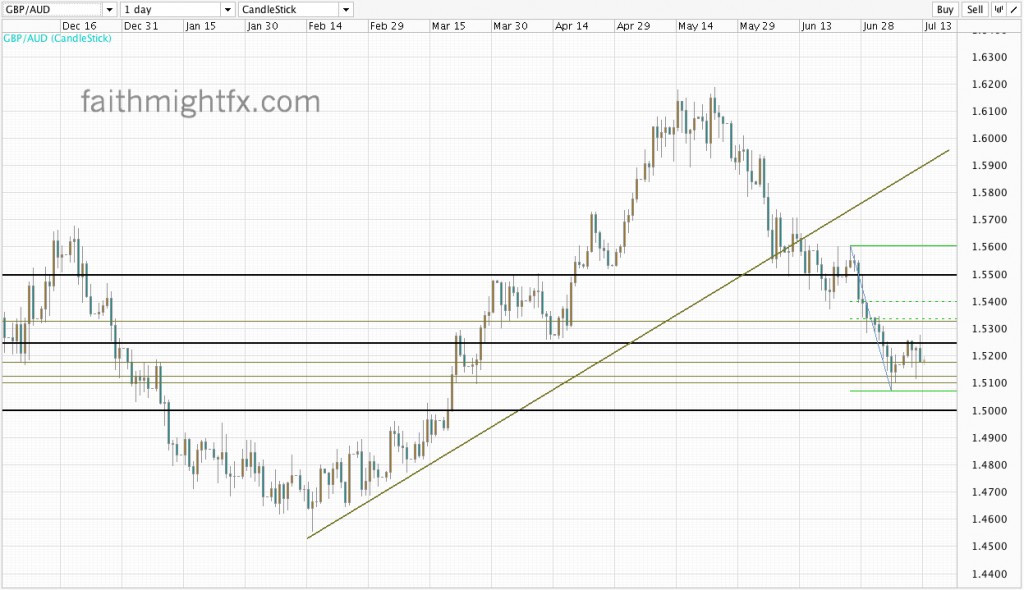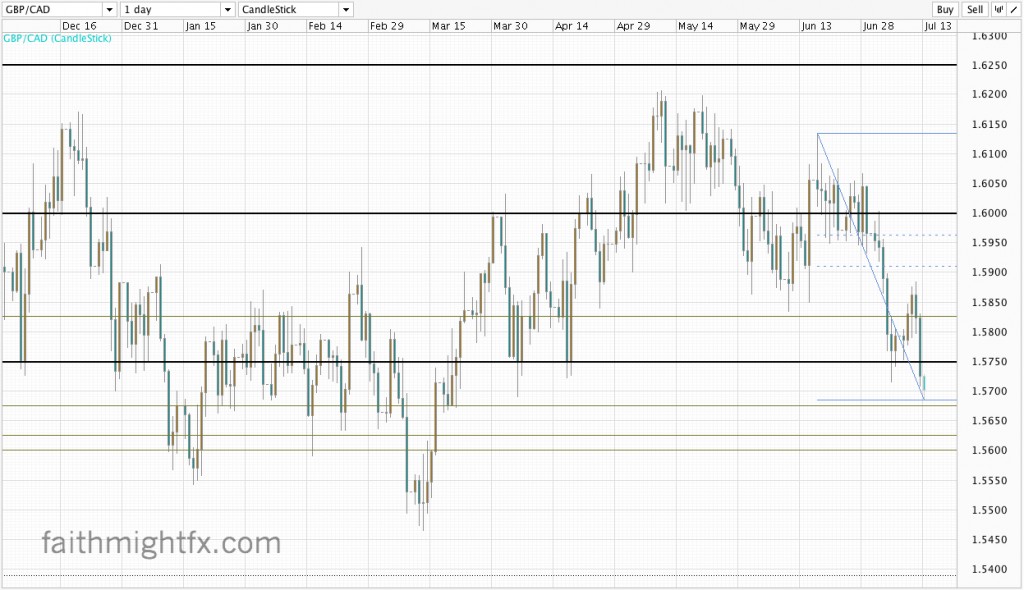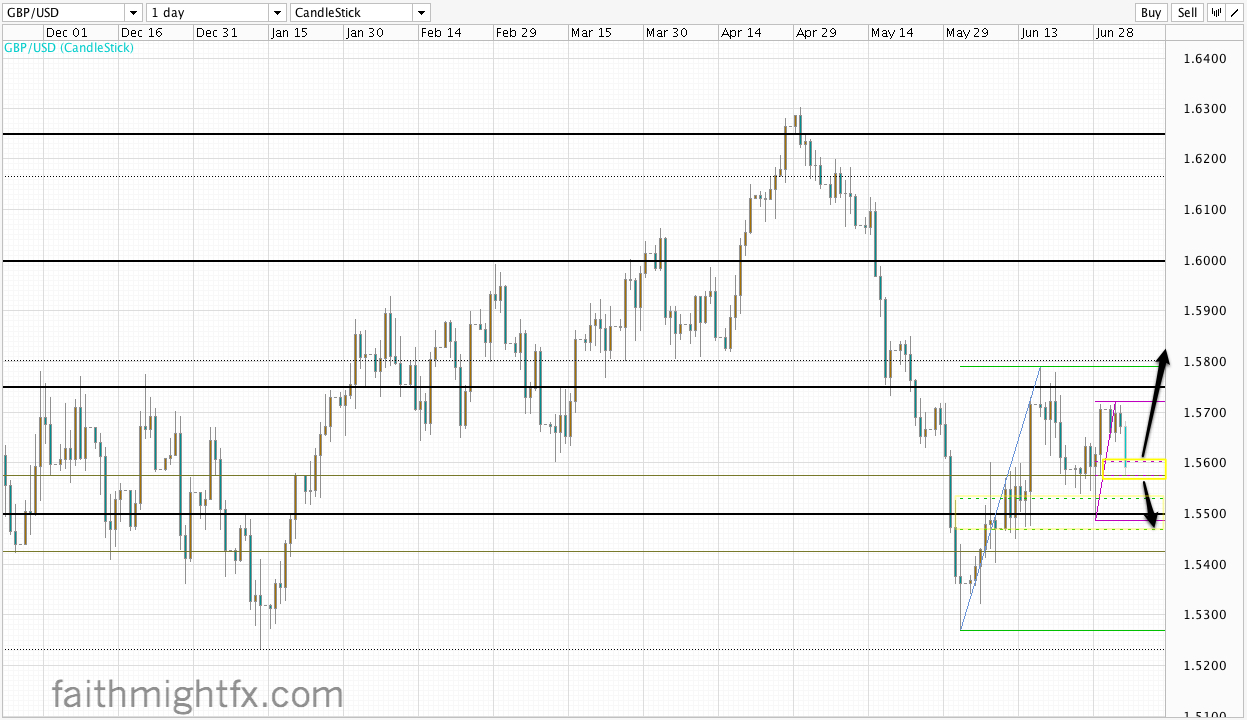The New Zealand dollar weakened for a month and rallied the $GBPNZD to the big time 2.00 psychological level. Despite the breakout higher to 2.0050, price formed a double top at this level. Earlier this week, I stated my wariness with this sterling rally versus NZD. Kiwi fundamentals looked good on this rally. In fact, this impressive looking $GBPNZD rally was only a correction. With the 50% Fibonacci level at 2.00 holding, this pullback could make its way to new lows. Today’s break below 1.9750 signals a move lower still to 1.9500.
In contract, the Australian dollar is still fundamentally weak. Iron ore and copper prices are still at low levels. The global economy is still slowing. This sudden wave of bullishness didn’t change those things. The recent $GBPAUD rally was a breakout not a correction like the $GBPNZD. To me, this wk’s rally in AUD is just a correction. Now we are starting to see this divergence in fundamentals play out versus the GBP. This may only be the beginning. Trade what you see.
Disclosure: Short $GBPNZD

